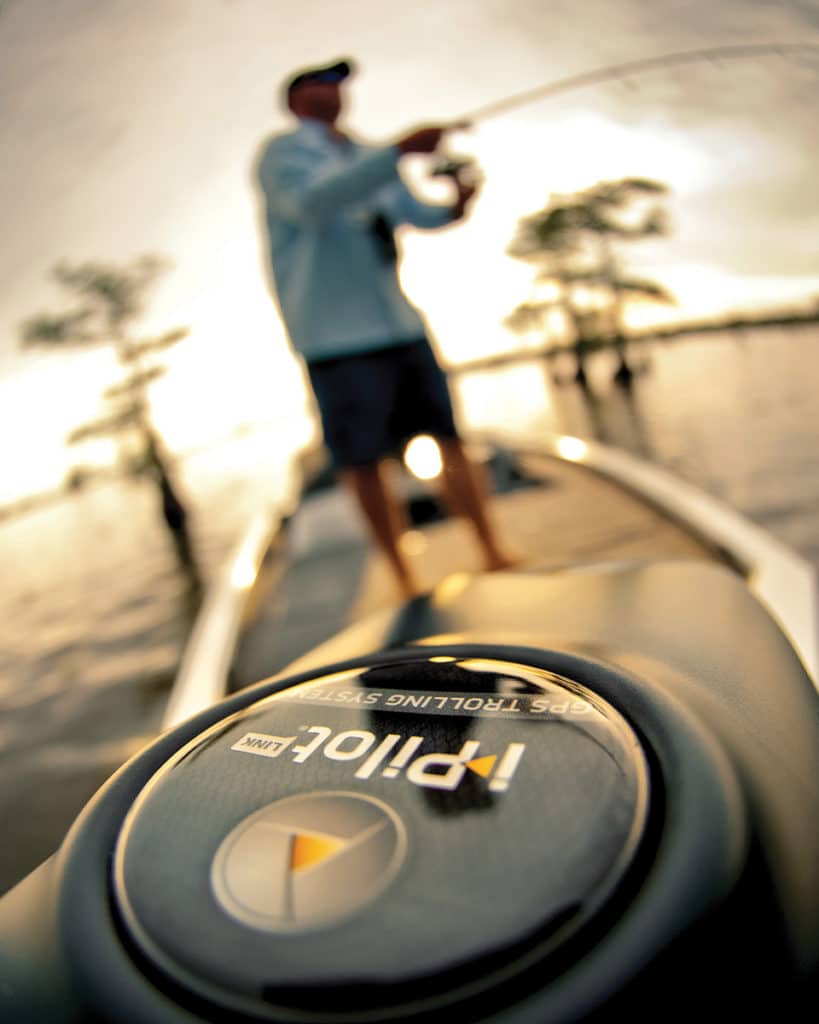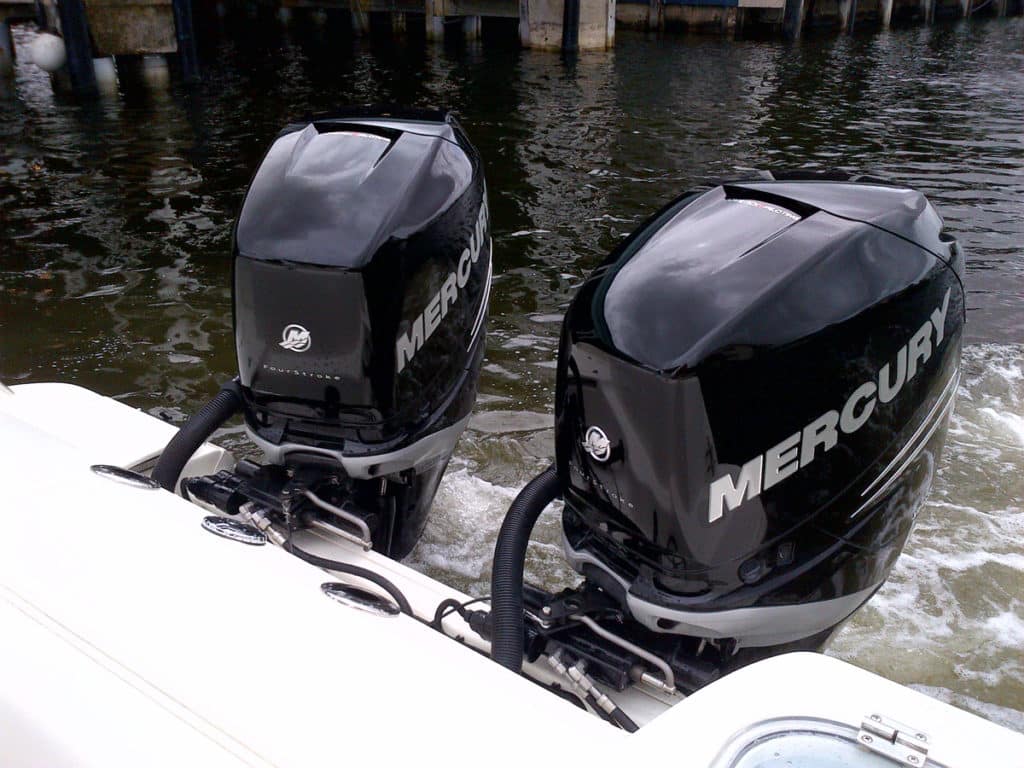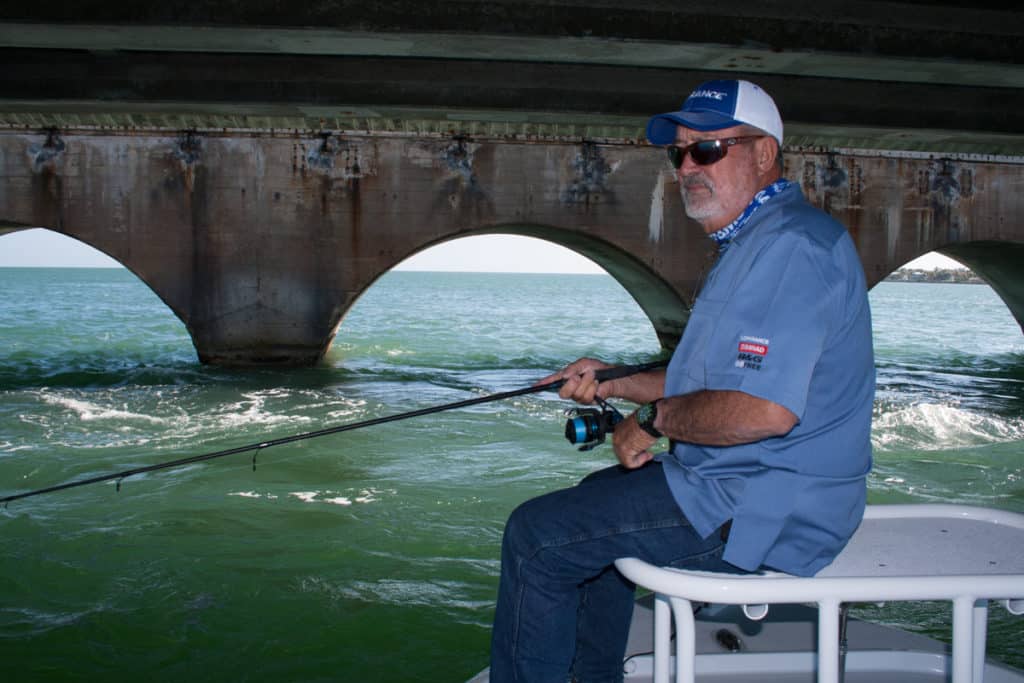Automatic positioning systems that use propulsion to hold a boat on station at the push of button have been on the market for a few years now, enough time for me to gain experience and form an opinion about the practicality of such technology.
Part of GPS-guided propulsion/autopilot packages, these virtual anchor functions include Skyhook from Mercury Marine and the Dynamic Positioning System from Volvo Penta, as well as Minn Kota’s Spot-Lock and MotorGuide’s anchor mode, which works with a Lowrance HDS unit.

Trolling Motor Systems
Designed to serve as fishing tools, the systems from Minn Kota and MotorGuide both use single bow-mounted electric trolling motors, which can swivel 360 degrees and employ variable speeds to keep the boat “anchored.”
Spot-Lock is a feature of Minn Kota’s i-Pilot, which integrates GPS with the Ulterra, Terrova, Power- Drive V2 and Riptide trolling motors. Push a button on a wireless remote to activate Spot-Lock. You can also control the i-Pilot with a networked Humminbird multifunction display.
When networked with a Lowrance HDS multifunction display with SmartSteer, MotorGuide’s Xi5 Pinpoint electric-steer trolling motors offer anchor mode, among other functions. You can activate anchor mode from the display’s touch screen.
I’ve used both systems in very challenging conditions — Spot- Lock on a 16-foot G3 in the unrelenting currents where Michigan’s Lake St. Clair funnels into the Detroit River, and MotorGuide’s anchor mode on a Yellowfin 24 Bay in narrow cuts along the Florida Keys during rampaging tide swings.
Both perform silently with remarkable precision in keeping the boat in position. As with a conventional anchor, the bow tends to point into the current or wind, whichever is stronger.
Unlike with an anchor, there is little swing. The boat holds tight to the position you set. If you want to move, you can jog side to side or back and forth to fish new areas — a valuable function when, for example, you’re fishing wrecks or the edges of a river channel.
Sounds perfect, but there are drawbacks. Electric trolling motors are relegated to freshwater fishing boats and bay boats with lowprofile bows. Trolling-motor shafts aren’t long enough for boats with high bows. Also, to adequately control a boat larger than 20 feet, you need a 36-volt system, which means three heavy 31-series deep-cycle batteries dedicated to the trolling motor.

Multiengine Systems
Mercury Marine has led the development of virtual anchoring with its Skyhook — a feature of its joystick low-speed steering technology available for the Zeus pod-drive systems, Axius sterndrive installations and multiple Verado outboards. Volvo Penta’s IPS pod drives are also available with Dynamic Positioning System.
All use one or more GPS receivers and multiple engines to automatically hold the boat in position at the press of a button. I have tried these in a variety of situations and found them particularly useful along crowded waterways, when waiting for a drawbridge to open or standing by for a spot at the fuel dock. If there’s a strong current, you’ll really love these systems for holding steady, saving the helmsman a lot of work.
Plus, if you’re running the boat single-handed, you can also use an automatic positioning system to take over temporarily while you rig fenders and lines before docking the boat.
Initially, I also thought these systems would prove a godsend for larger fishing boats — a way to precisely target fish on wrecks or in passes without anchoring. Yet in my experience, that hasn’t panned out, mostly because of the noise, vibration, exhaust fumes and constant thumping as multiple drivetrains rev and shift to hold the boat in position — not exactly the peace and quiet most anglers have in mind. Also, with fishing lines draping over the sides with engines in gear, the chances of fouling a propeller increase significantly.

Remain Vigilant
If you’re using an automatic positioning system, resist the temptation to set and forget. Engines stall. Fuses blow. Electronics blank out. Any of these can short-circuit a virtual anchoring system. If your head’s not in the game, you’ll quickly be at the mercy of wind and current. Need to relax? Drop the old-fashioned anchor in a quiet cove. Better yet, fi nd a dock and tie up. That’s a positioning system you can trust most.









